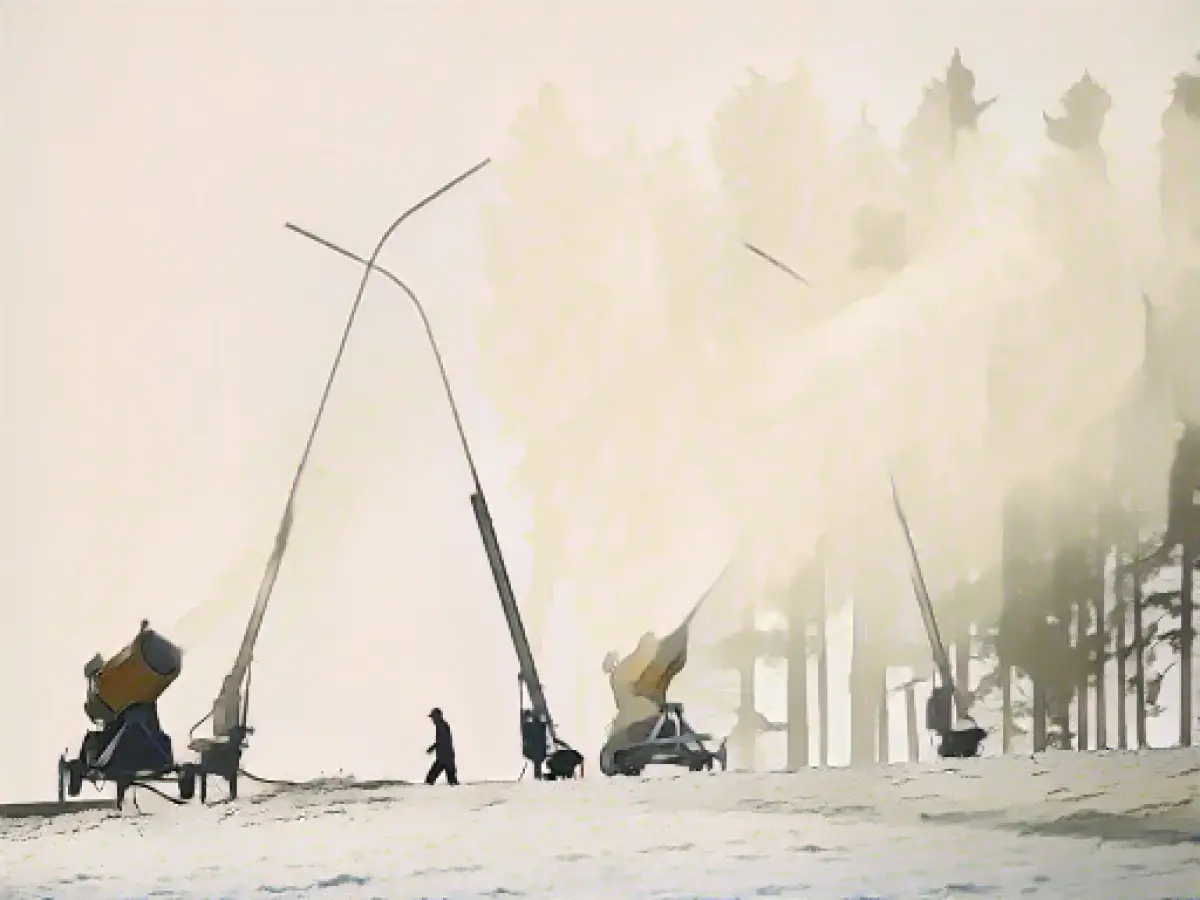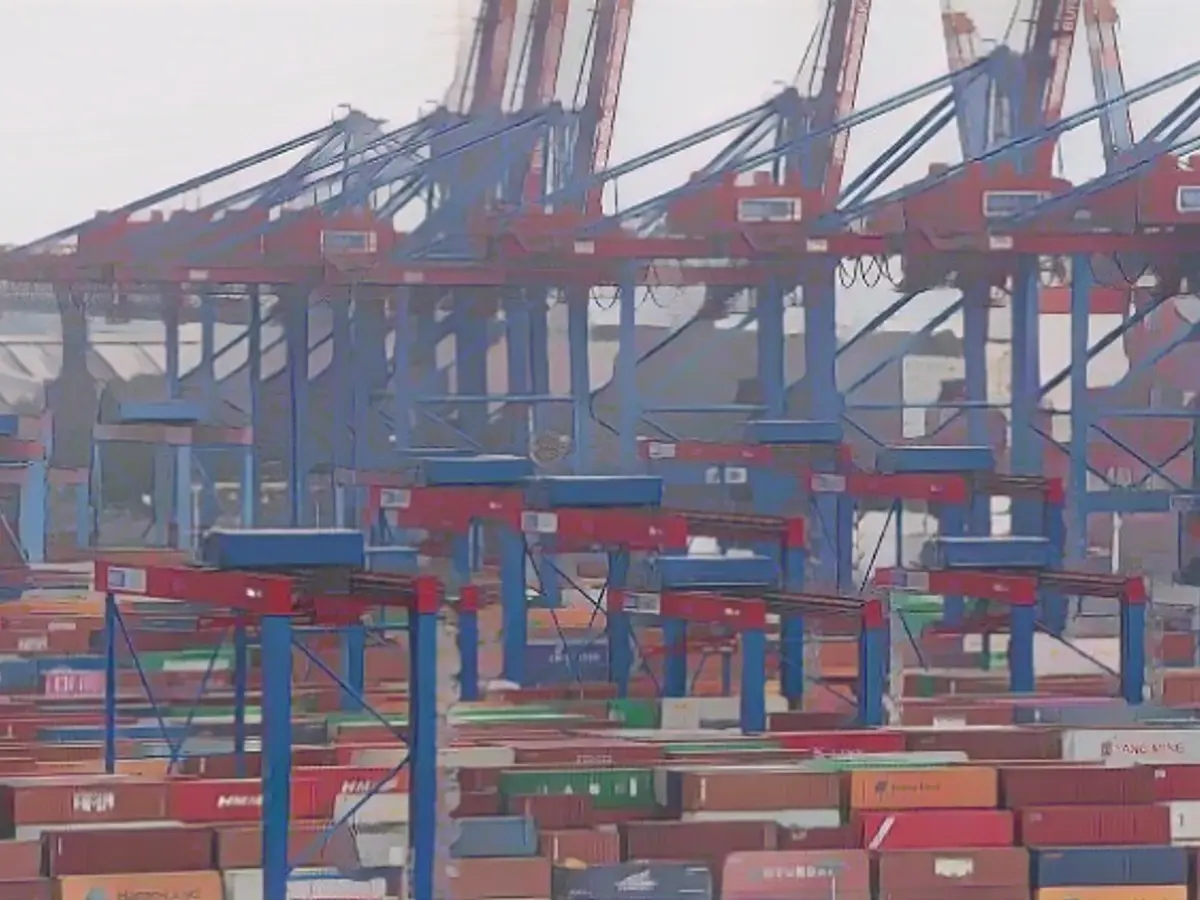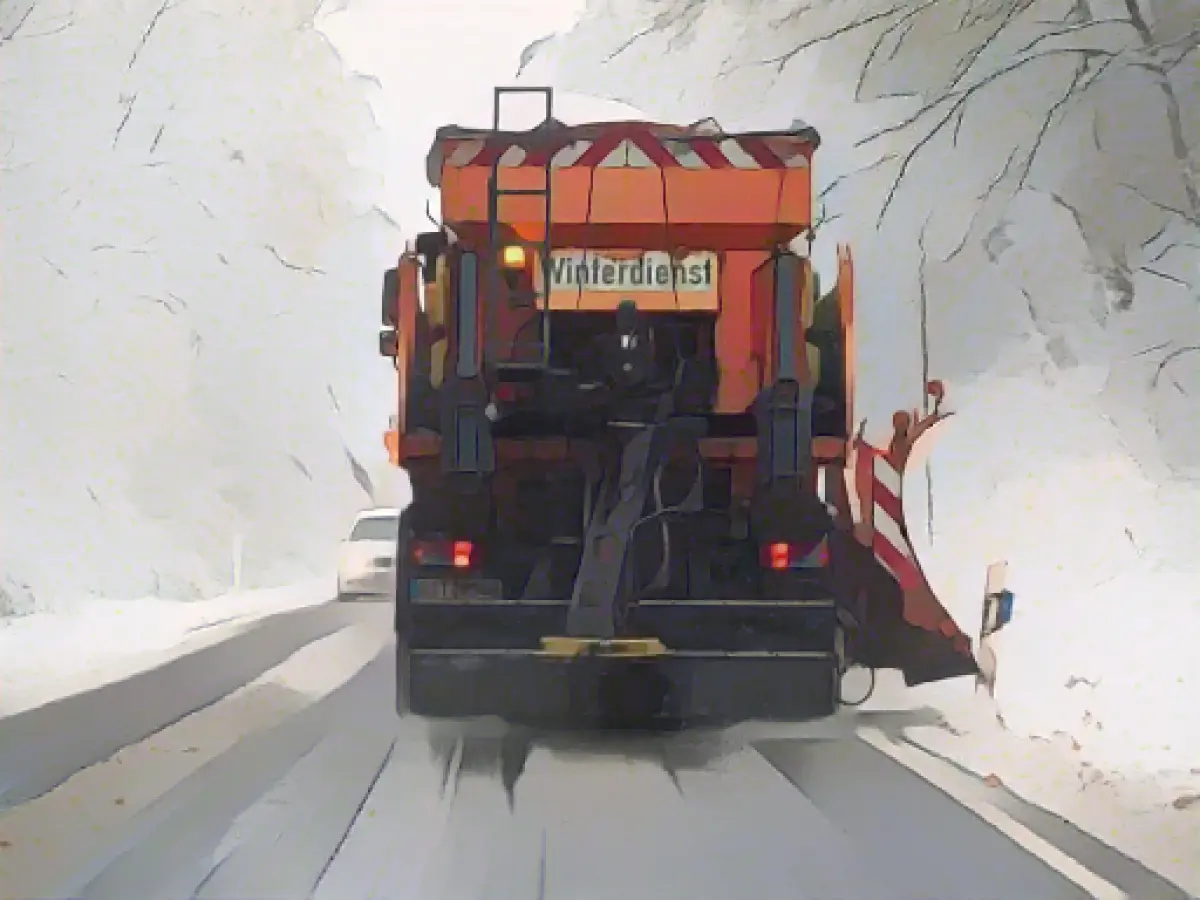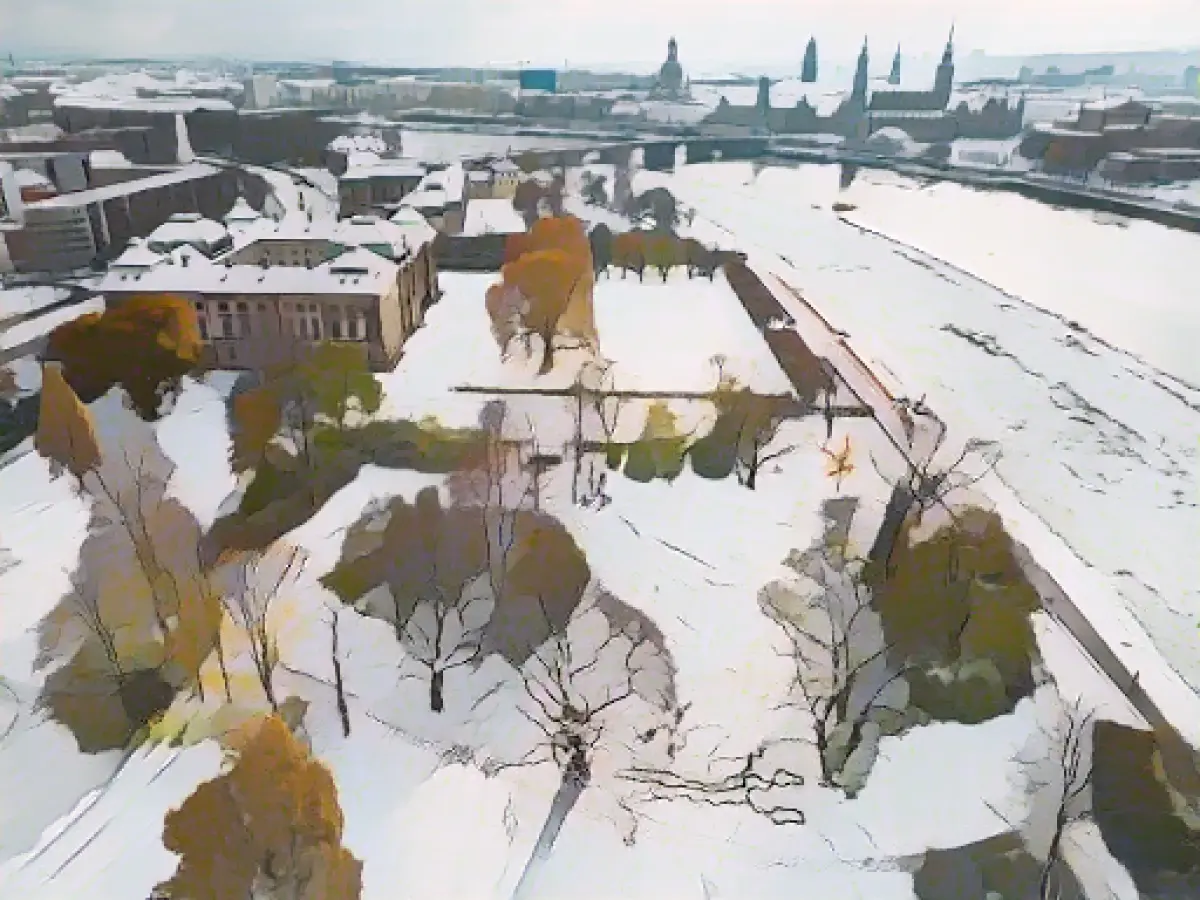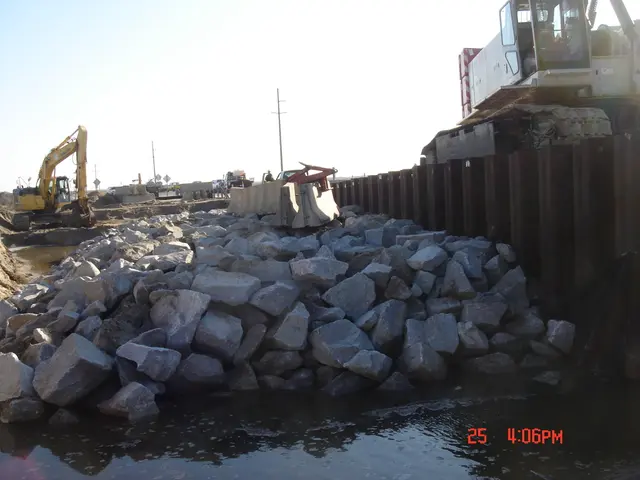Unpredictable weather and snow on the horizon
The approaching low pressure system, named "Niklas," is set to bring some unexpected weather changes and even the first dusting of snow to certain areas.
As the air pressure drops, snowfall will reach medium altitudes by Friday. Intriguingly, meteorologist Sebastian Schappert from the German Weather Service (DWD) in Offenbach suggests that some of Saturday's showers may even transform into snowflakes at low elevations. However, he warns that the mild temperatures and remaining warmth on the ground will prevent the snow from sticking for sledding fun in many places.
But the weather outlook is quite different in the Ore Mountains and the Alps. In these regions, the snow will make a lasting impact, as they often receive and hold onto snow for extended periods.
Let's delve into the specifics of the forecast:
Thursday will bring a grey cloud cover with occasional showers or drizzle. The southern half of the country will see more sunshine after the fog subsides, while temperatures will reach 9 to 13 degrees Celsius in the north and 4 to 8 degrees in the south. A moderate to fresh wind will blow from the southwest to the west, with stronger gusts in the north. The sea and high peaks may witness heavy squalls or even gale-force winds.
The weather will shift dramatically on Friday, with an exchange of sun, clouds, and numerous showers. In some parts, there may be brief hailstorms. Above 400 to 500 meters, precipitation will predominantly fall as snow. More prolonged snowfall is predicted in the Alps. Temperatures will range between 4 to 10 degrees, while the wind will blow strongly from the west, later shifting to the northwest. Gale-force winds are expected near the showers and heavy squalls on the North Sea and in the higher mountains.
The forecast anticipates another day of changeable weather on Saturday, filled with numerous showers. Rain will dominate in the western regions, while the rest will see snow or sleet. Sunny spells will occur in the northern and northeastern regions. Persistent snowfall is expected in the Ore Mountains and the Alps.
Friday's unpredictable weather may transform into snow showers, potentially reaching low elevations as per the meteorologist's prediction. Regrettably, the quick melting of temperatures and remaining warmth on the ground will likely prevent the snow from sticking for a proper sledging experience.
On the other hand, the Alps' winter weather will be quite different. Schappert describes a pattern where precipitation accumulates to form snow that can last for a long time in these mountainous regions.
Source:
Enrichment Data:
Low-pressure systems, like "Niklas," play a crucial role in driving weather patterns, especially in temperate regions. These systems can bring significant precipitation, including snow, to various regions, depending on temperature and atmospheric conditions.
Snowfall can be influenced by various factors, such as:
- Atmospheric Pressure Systems: European weather patterns typically feature low-pressure systems, like the "Icelandic Low," during the winter months. These systems can bring substantial precipitation, including snow, to certain areas.
- Temperature and Precipitation: The likelihood of substantial snowfall for sledding is influenced by temperature. If temperatures are too high, precipitation may fall as rain instead of snow, even if the air is cold enough to support snow formation at higher elevations.
- Regional Climate Conditions: La Niña patterns, which are currently prevailing, generally favor wetter conditions in the Northwest and drier conditions in the Southwest. This can lead to varying snowfall levels across regions.
In summary, low-pressure systems, like "Niklas," contribute to the weather patterns and can bring snowfall to certain areas. The likelihood of substantial snowfall for sledding goes hand in hand with temperature and regional climate conditions.
